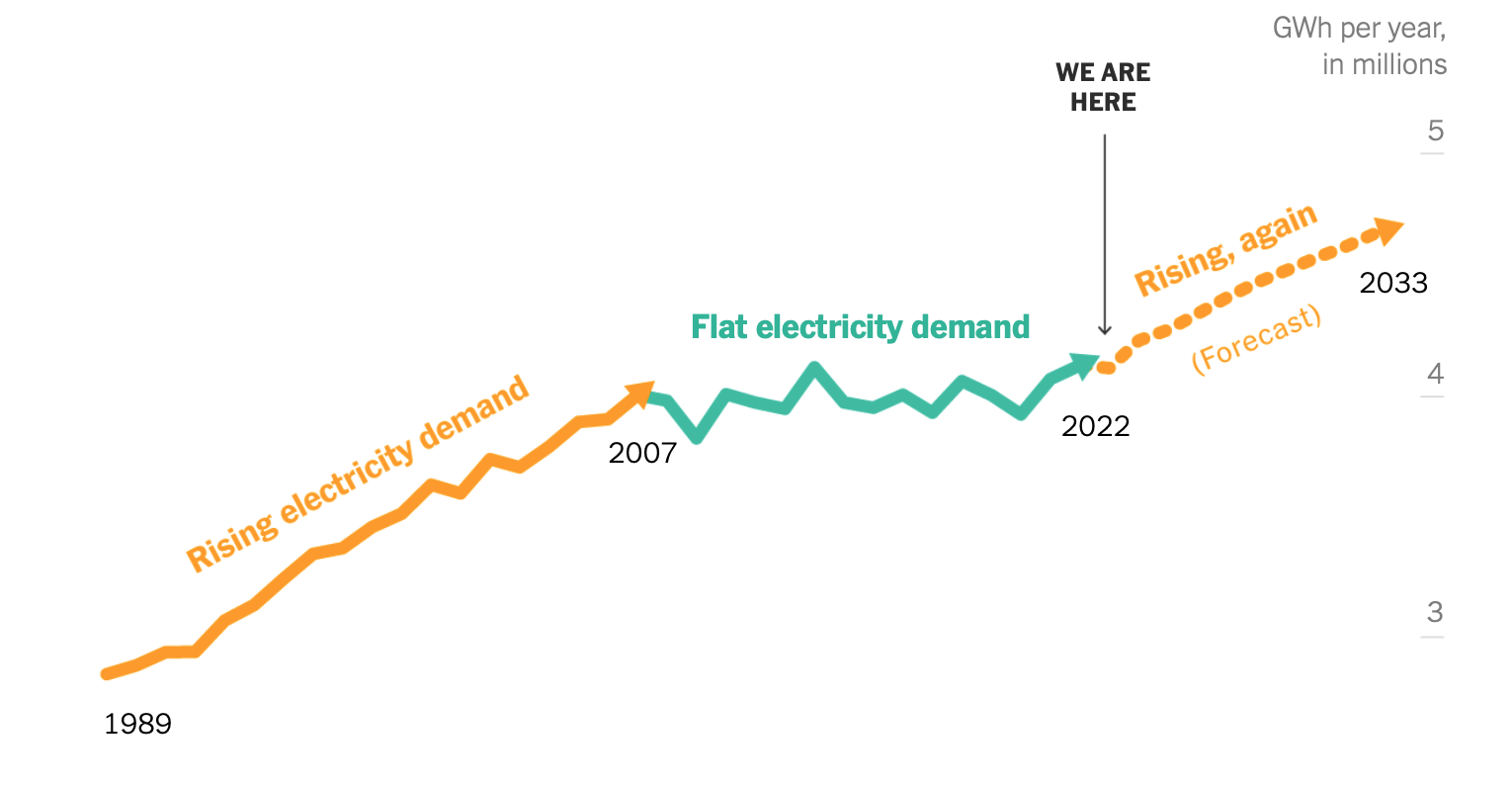“One of the things that we found in the Missouri vs. Biden case was that the Biden administration was telling Facebook to censor and shut down groups of vaccine-injured patients, even though their stories were true. It didn’t matter that they were truly vaccine-injured. All that mattered was that the Biden administration did not want that information out, because they thought it would be bad for the public to know it. So they coerced Facebook into shutting that down.”--Bhattacharya
Almost a month after hitting 2024 NFL free agency, Claypool has been added to an exclusive negotiating list by the CFL's Saskatchewan Roughriders. Back to Canada.
***
Emission Reality Raises Its Ugly Head
The NYT had a surprising article on energy use and climate change. Coal plants are almost gone and electricity usage is beginning to rise. Not what the U.S. administration planned or foresaw.
The front page article had the headline “A New Surge in Power Use Is Threatening U.S. Climate Goals.” The gist is that various sources of new electricity demand are rapidly emerging, from data centers to EVs to AI. Electricity demand is starting to rise, but wind and solar generators can’t be added to the grid fast enough to fulfill this demand. And thus utilities are starting to add large numbers of new natural gas plants.
The Times provides this chart (sorry it's so poor) of the recent history of electricity demand in the U.S., with a projection for the next decade (this graph shows a rise in electricity demand to 2007, then a flat period until now, then a projected rise):

Demand has been flat for fifteen years, but now looks about to surge. From the Times, the Times!:
To meet spiking demand, utilities in states like Georgia, North Carolina, South Carolina, Tennessee and Virginia are proposing to build dozens of power plants over the next 15 years that would burn natural gas. In Kansas, one utility has postponed the retirement of a coal plant to help power a giant electric-car battery factory.
Some utilities say they need additional fossil fuel capacity because cleaner alternatives like wind or solar power aren’t growing fast enough and can be bogged down by delayed permits and snarled supply chains. While a data center can be built in just one year, it can take five years or longer to connect renewable energy projects to the grid and a decade to build some of the long-distance power lines they require. Utilities also note that data centers and factories need power 24 hours a day, something wind and solar can’t do alone.
Today, the pledge date of the Paris Climate Agreement, 2026, is only two years away, and we’re barely halfway toward the goal. Moreover, most of the supposed “progress” has been achieved by closing coal power plants and replacing them with natural gas, a process that is now nearly complete. There are almost no coal plants left to close. And now electricity demand is rising and utilities are looking to build more natural gas plants. The 2026 pledge will never be achieved.
And the 2030 pledge is even more ridiculous.
On Monday, Amin Nasser, the CEO of Saudi Aramco — the world’s largest oil company — gave a speech in Houston where he said a bunch of obvious things that somehow other oil executives (from companies based in the U.S. and Europe) are unable to say. The speech was widely reported. Here is one report from CBC.
Excerpt: The head of the world's largest energy company on Monday urged the world to accept the "hard realities" that oil and natural gas will be around for a long time to come and consumption of both sources of energy is likely to grow for at least the next decade or two. . . . "We should abandon the fantasy of phasing out oil and gas and instead invest in them adequately reflecting realistic demand assumptions," he said. . . . "All this strengthens the view that peak oil and gas is unlikely for some time to come, let alone 2030," he said. "No one is betting the farm on that."
Here is a chart from page 2-29 of EPA’s Report showing trends in U.S. GHG emissions by economic sectors:

As you can see, the large majority of the decreases in emissions achieved since 2005 have been in the electric power sector.
No comments:
Post a Comment